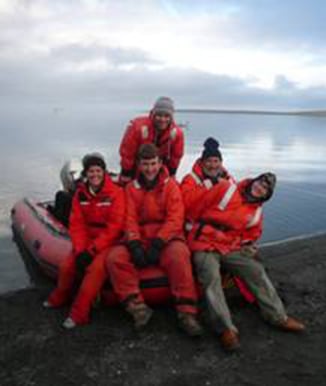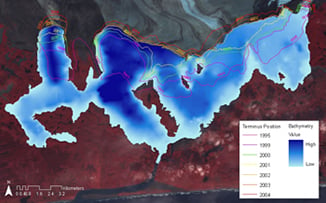
The Bering Glacier is the largest and longest glacier in continental North America. The largest temperate surging glacier on Earth, it has surged at least six times during the twentieth century, most recently in 1993-1995. It is currently retreating.
Scientists from MTRI have been conducting research at the Glacier for nearly a decade. MTRI's participation at the Bering Glacier is one component of an interdisciplinary team of scientists investigating the entire Glacier system for the Bureau of Land Management.
To better understand the melting (ablation) of the Glacier, MTRI designed and fabricated a device to record glacier melt and movement. The instrument, deployed on the ice, recorded temperature, barometric pressure, wind speed, and solar illumination every hour. The instrument provided, for the first time, a comprehensive measurement of glacier melt as a function of time which can exceed 10 cm/day and yielded valuable new information on flow rates of the glacier.
MTRI has also conducted water characterization measurements in Vitus Lake, a large ice-marginal lake at the terminus of the Glacier. As the Glacier retreats, Vitus Lake has expanded rapidly in area and volume, and MTRI documented the highly dynamic and evolving oligotrophic system. MTRI scientists have used an ensemble of characterization techniques including CTD casts, multi-parameter water quality profiles, surface water quality measurements using autonomous robot buoys, ADCP and lake level measurement, and development of a remote sensing-based algorithm to measure and predict turbidity an indication of sub-glacial hydraulic routing which is tied to significant glacial events such as outburst floods or surge events.
2008 Bering Glacier Program

The 2008 Bering Glacier field program involved participation from several different Michigan Technological University departments. During this time, MTRI continued its glacier ablation, water quality, hydrology, terminus characterization, and remote sensing research. Michigan Tech’s geology department came back for a second field season of resistivity and seismic measurements, and the biology department continued its second year of biological and lower food web investigations of Vitus Lake.
